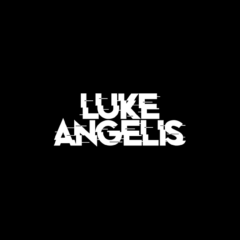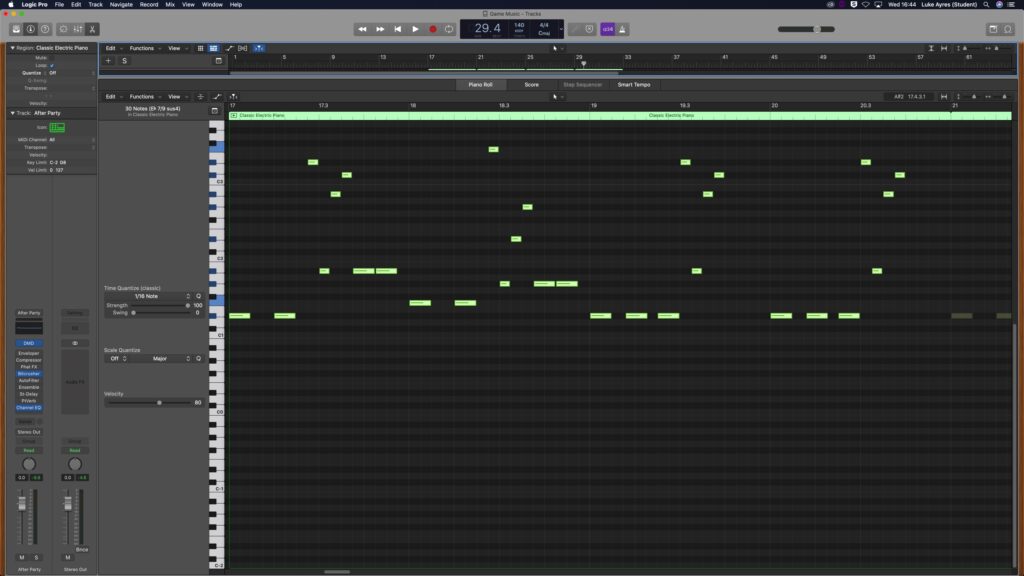
This is a melody I wrote a while back. I have used it in a track before and it created a nice-sounding bassline. This could easily be used for many different genres of music. I drew this in digitally as playing it while recording would be very difficult The melody has a nice swing which creates a groove within the song. The notes move up and down octaves creating an unpredictable and interesting pattern. This is important for 8-bit composition as the main riff should be interesting and unique. A lot of game music can sound the same, so having an interesting bassline that catches the listener’s attention from the get-go is very important. The high notes really poke through the mix which creates a sense of excitement. People tend to concentrate when they are playing video games, so having something that can pierce through that barrier of concentration is very important. This was a good start to my track.
I bounced down the first bassline I made just to keep track of my progress. At this time I was struggling with what else to add as I have never tried to make 8-bit music before. I didn’t want to change the melodies going through the song too much as it may throw people off guard, so I decided to use this pattern as the layout for every other layer. From this bassline, I was able to decipher that the track I am making is in the key of D#. This also helped me map out a chord progression, string progression, and many different layers of pads and atmospheres. From here on it was very easy to add more layers. The next step was to develop this pattern and add more sounds to create a fuller more professional-sounding track.

As I said in the paragraph above, the next step after creating the pattern was to add different sounds. I started off with the piano. Having a piano to start off with is very useful as it is a nice clean sound. The nice clean sound allows me to hear when a note may be out of key or not in the right place. It is also easy to hear it when you play the metronome alongside it. This meant I could check my pattern and quantize it while also hearing the metronome very easily. The metronome was keeping along with the 140 bpm pattern and allowing me to keep in time. I then added bass to fatten the pattern. A bass is integral in any genre of music so I wanted this bass to be nice and big. This is why I chose and sound that was sampled from an actual bass recording. It paired nicely with the piano and that was the second layer done. Finally, I added a layer from a plugin called Retro Synth. This plugin was made for 8-bit composition and has sounds that fit the vibe of the track perfectly. However, you have to make the sounds by yourself. I messed around with filters, EQs, wavetables, envelopes, sidechaining, and the built-in flanger effect. I ended up creating a sound I really liked and layered it along with the bass and the piano. They all fit perfectly and sounded really nice and clean together. This was the hardest part of the track.
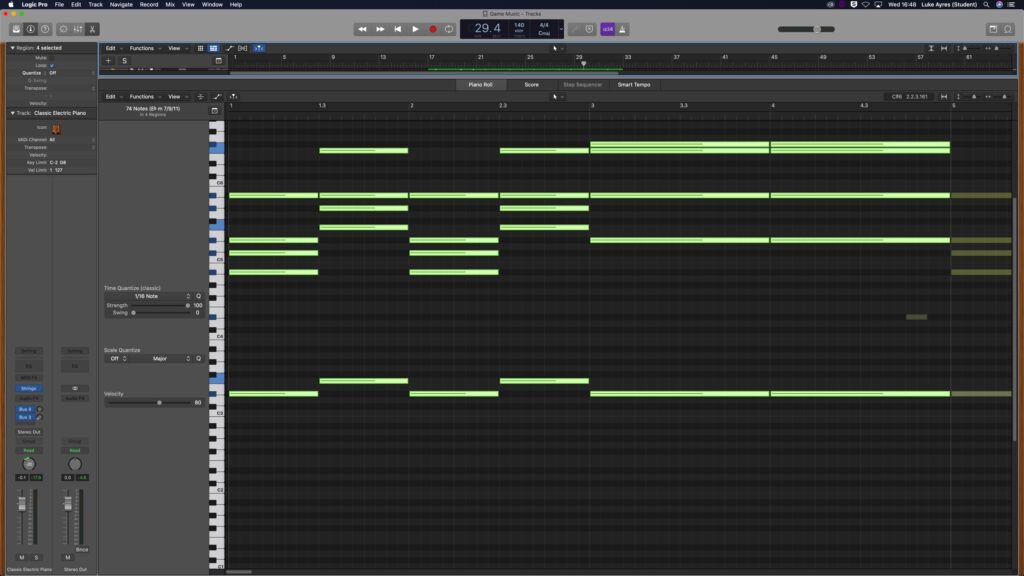
These are the chords I had written for the intro, they went very nicely over the bass and I thought they would be a good fit for the track. They were written in the same key as the bass which is D#. I wanted the chords to be quite snappy and change quickly, so I made the notes shorter. Video game music often repeats itself quite a bit so I made sure to use the same chords throughout the pattern and then an entirely new chord right at the end. This ended up sounding really nice and complimented the tune nicely.

I layered the chords I made with two things, one was a piano and the other was strings. Strings are one of my favorite things to add to a track, they bring a dramatic effect to the tune and often create anticipation, plus, they sound really nice! This was perfect for the buildup as it created the feeling of excitement that I wanted. I would have also layered the chords with a pad sound, but pads are often automated and moving. They sometimes move very slowly, and for such quick chords, I didn’t want them to slow down the pattern. Plus, pads cover such a large portion of the frequency scale, and I didn’t really want any low-end in the intro/build-up. I could have removed the low-end with an EQ, but I haven’t quite perfected EQ’ing on logic just yet. It was easier to just not use one.
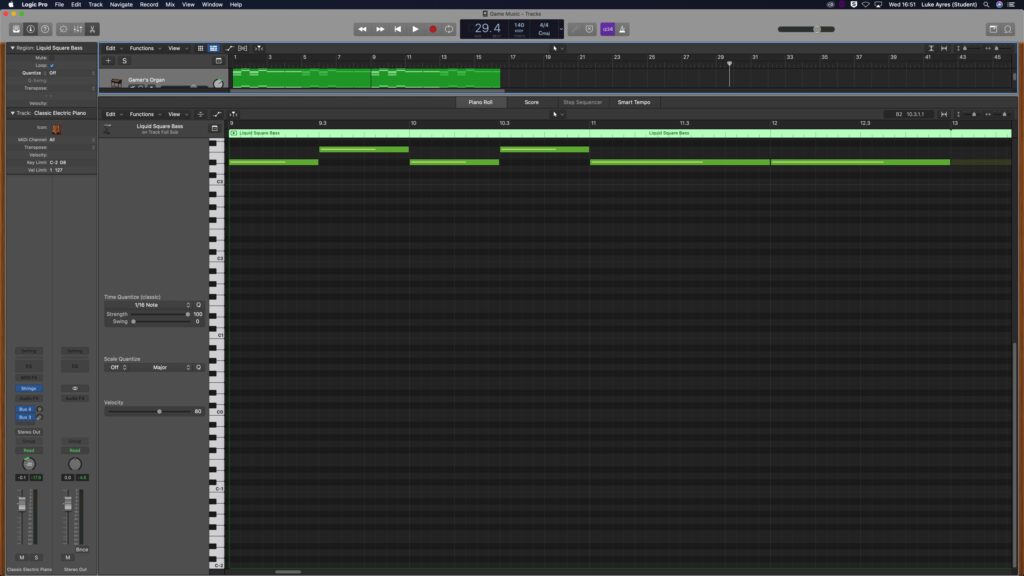
Once I decided against having much low-end in the buildup/intro, the track seemed a little flat. I would have added more layers to the chords, but I didn’t want to mess around with it too much as it was really sounding nice. I decided to add rolling sub-bass under the chords instead. They play the root notes of the chords and give extra leverage to the chords. The track was sounding full at this point so I decided to leave it there.

The drop needed some drums. As I am a house music producer I defaulted to add house drums to the track. However, it actually sounded really nice. This gave the track a groove and I could feel my head bopping while playing the drop. This was a good sign. I used a house music kit to get the classic 808 sounds that are found in classic house songs. The drums ended up sounding really nice, but there was still something missing.
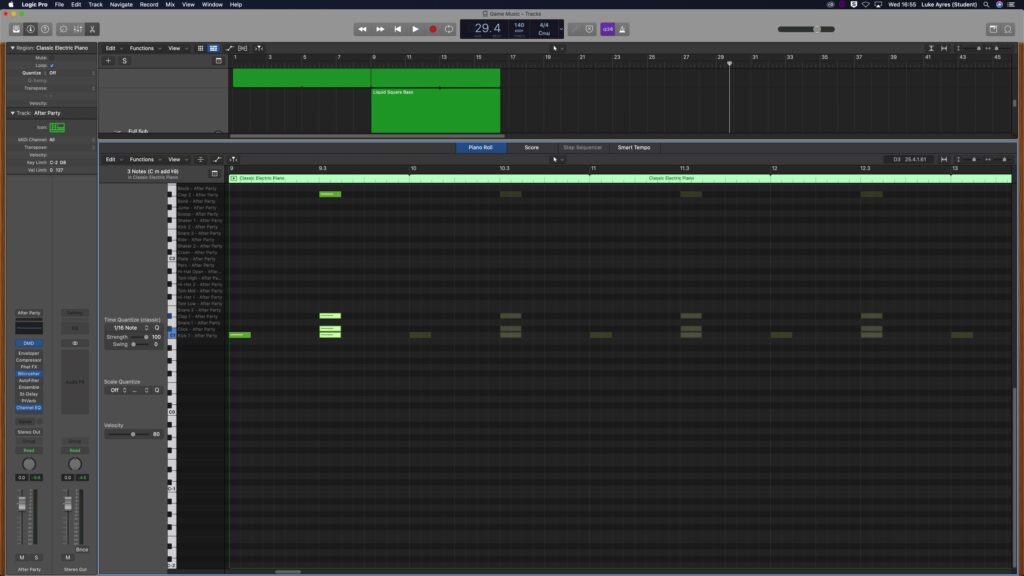
I then went to another drum kit to get some different sounds for the drop. I wanted a variation of sounds in the climax so I chose a different kit and started adding in some of the samples. I didn’t go too overboard as I didn’t want the track to start sounding crowded. I just added another kick and a clap. This made the drop sound a little bit better and completed our drums.
This is a bounce of the drum pattern. As you can see, they sound very housey. I thought about changing them, but why change something that’s not broken? I documented this part specifically because it’s so important to the track. The drums really finished everything off now it was time for additional FX and ear candy.
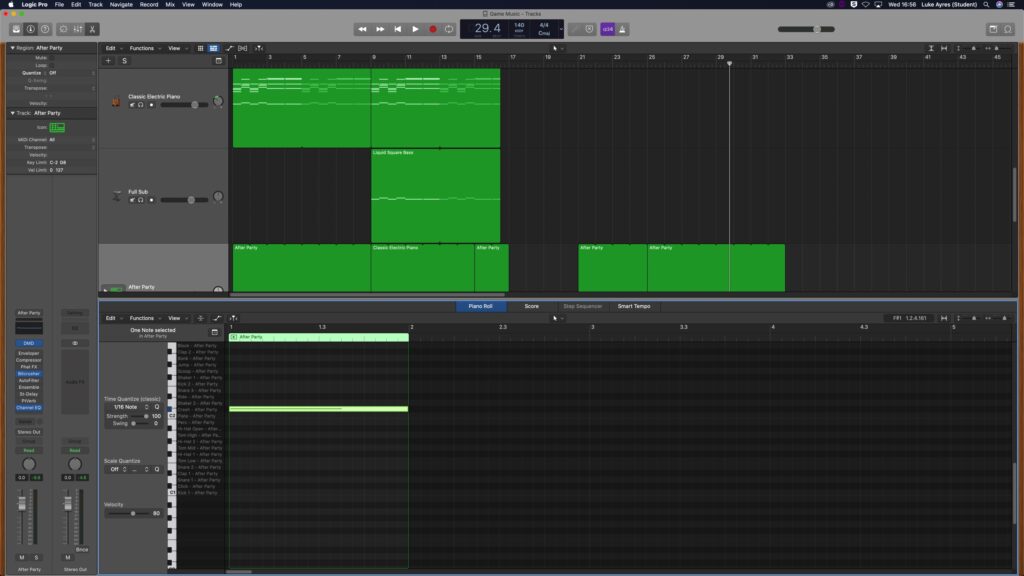
There isn’t much to say about this bit of the process. To give the track that smooth transition between parts, I needed to add some effects. I found a nice-sounding crash in one of the drum kits and added it to the parts where the transitions happen.
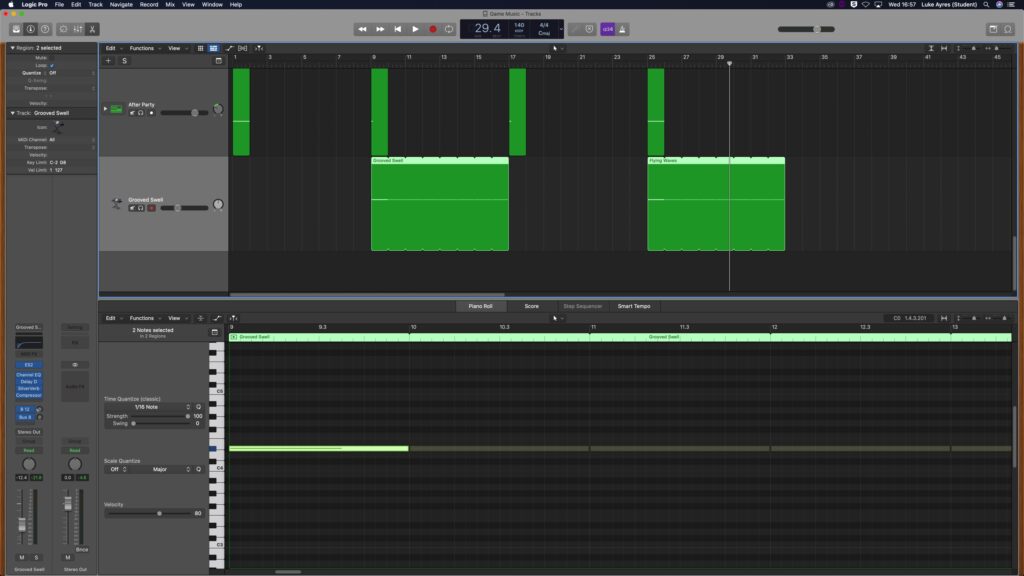
I wanted to add some pads that were automated and moving. I didn’t want them to be in a chord pattern, just following the root notes of the chords as the sub-bass did. I thought this would elevate the track, and it did. I added a different pad to both the inro and drop because they both needed different levels of intensity and movement. The intro one is significantly slower and has less movement, and the drop pad has more movement at a higher rate.

This is the point of the process where it really turned into 8-bit music. I found an effect called bit crusher which gave you the option to make your layers sound retro. I added this to EVERYTHING. I needed that retro, old-school feel, and this plugin was able to make that happen. This is why I used it so heavily. Some elements needed adjusting but other than that you could use the same preset for most of the tracks. This made my job easier and allowed me to do everything much faster.
This is my first bounce of the logic track and it was sounding just how I wanted it to. However, I felt there was something missing, although it may be something very small, it was still absent. I decided that I needed to add another layer of synth, just to keep the song interesting. I added this straight away.
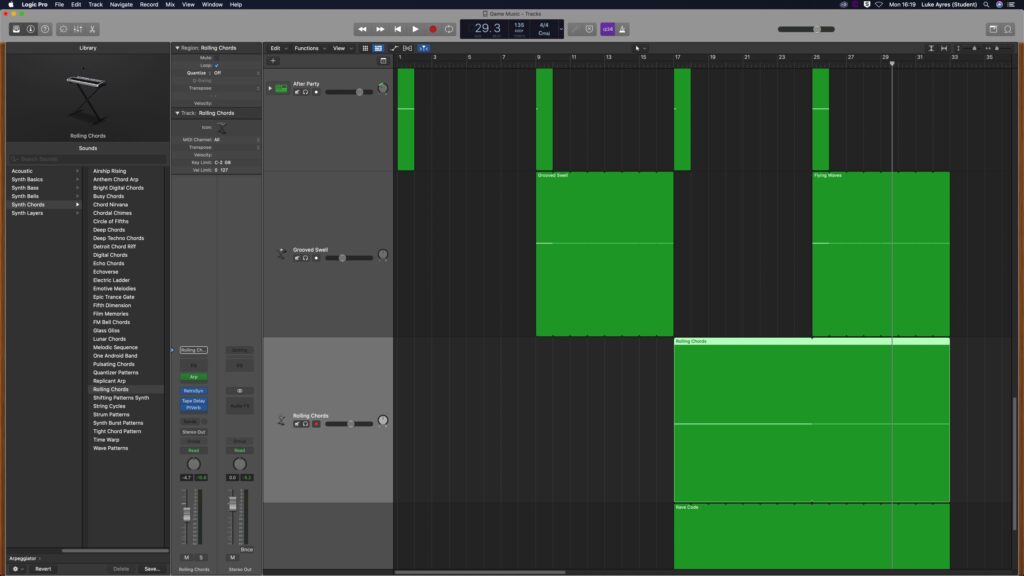
This was the synth I was talking about in the previous paragraph. I added this synth and then pulled some of the pads back in the mix so this can be heard better. This synth filled the space where something was missing, and as it is a constantly moving synth, it makes the track more interesting and unique. I also added bit-crusher to this to make it sound like it is from an 80s video game.
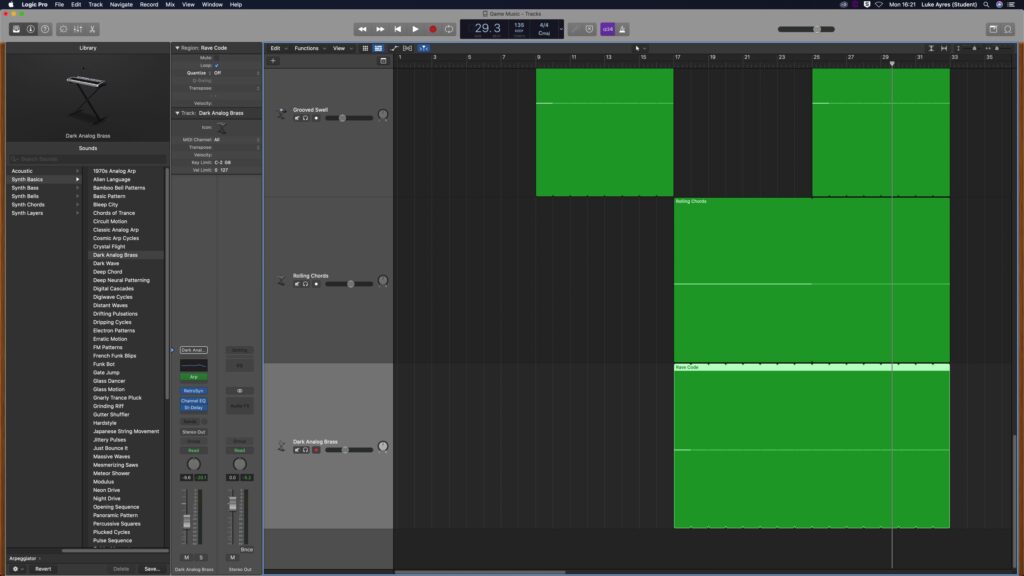
I added one more layer of the pad just to finish the track. This layer can barely be heard as I pulled it really far back in the mix. This layer was mainly added to fill out the low end of the drop and give added power when the drop finally comes in. The song could do without this layer, but I thought it was better to add it now than regret it later.
This is a bounce off the logic track when everything was added, and it is sounding very nice if I do say so myself. There is not much else that needs to be added to this to make it a finished track. All that needs to happen is a few mixing adjustments need to be made. The next bounce of this track will be the final one. This will be added to another page and evaluated. This track will be very good for an 8-bit vibe.
